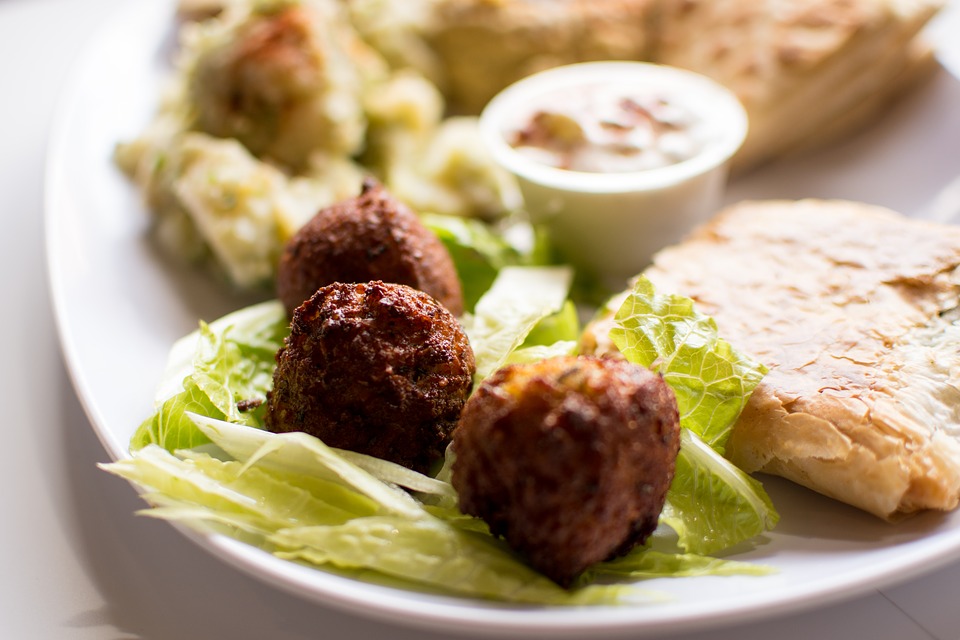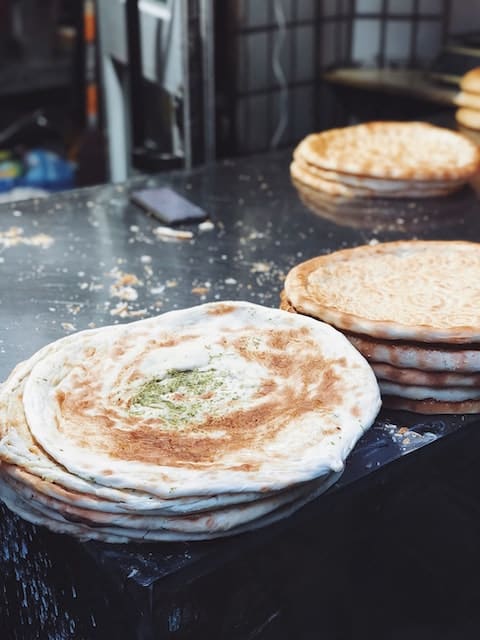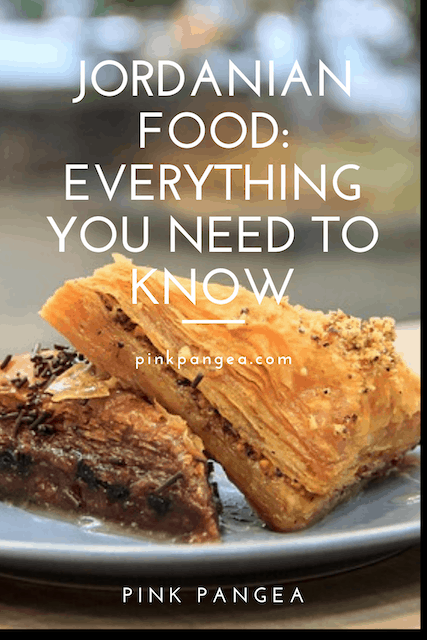Jordanian Food Culture: Everything You Need to Know

 To humans, food is not only essential to life, but also an art form and a defining part of their culture. Every culture contributes a menu of different flavors and combinations of flavors to the world’s palate, as well as various methods for cooking and consumption. Food – how it is prepared, how it is eaten, and what it means to the people consuming it – is oftentimes a subculture within a broader culture. Food culture may not be something most people give much thought to on a regular basis, but for me, this was one of the first aspects of Jordanian food culture I noticed and one for which I have a great appreciation.
To humans, food is not only essential to life, but also an art form and a defining part of their culture. Every culture contributes a menu of different flavors and combinations of flavors to the world’s palate, as well as various methods for cooking and consumption. Food – how it is prepared, how it is eaten, and what it means to the people consuming it – is oftentimes a subculture within a broader culture. Food culture may not be something most people give much thought to on a regular basis, but for me, this was one of the first aspects of Jordanian food culture I noticed and one for which I have a great appreciation.
Where I am from in the United States, meals are very much defined bay time. Breakfast is eaten from the time one wakes up until around 11:00 AM, lunch is usually from 12:00 – 2:00 PM and dinner is usually from 5:00 – 8:00 PM. There are certain breakfast foods, lunch foods, and dinner foods, and although there is the occasional “breakfast for dinner,” certain foods are associated with a specific meal, and therefore a specific time of day.

- Pita bread with olive oil and zatar (thyme).
This is not how meals are defined in Jordan. In Jordan, breakfast is the first meal of the day, lunch is the largest, and dinner is the last. Breakfast is usually pita bread, oil and zatar (thyme), plain yogurt, cheese, and jam. Lunch, regardless of the time of day, is usually the largest meal and often consists of rice and meat, whether mutton (sheep), chicken or beef. Dinner is the last meal of the day and is usually eaten fairly late at night and consists of either the same items eaten for breakfast or leftovers from lunch.
“In Jordan, meals are intimate, social affairs with everyone eating from the same communal platter.”
Another difference I noticed, and have actually come to embrace, is the way in which meals are eaten. In the United States, eating utensils are used at every meal, whether spoons, forks, or knives. Most people eat from an individual plate, not touched by anyone else.
In Jordan, people rarely eat from individual plates and rarely use forks or knives, and, sometimes, depending on the meal, there are no spoons. At almost every meal, each person is given a piece of bread, which she uses as a utensil to grab from the large, communal platter of food placed in the middle of the table or floor. Most meals are supplemented with sides of plain yogurt and a salad made with diced cucumbers, tomatoes and green peppers mixed with lemon juice. Meals are intimate, social affairs with everyone eating from the same communal platter. To me, this highlights how closely intertwined food is with community and social ties in Jordan.
Jordanian Food Culture: Popular Dishes in Jordan
Mansef
Mansef is the national dish of Jordan and is usually eaten on Friday (the holy day in Islam). Some families eat it every Friday, while others, like my host family, eat it one Friday a month. The dish itself consists of a layer of bread covered with a mixture of rice, almonds, and meat, usually mutton. A sauce made from a fermented, dried goat yogurt called sharab is poured over the meat and rice. In this meal, no utensils are used and there is usually no additional bread. One uses her hands to tear off pieces of meat and scoop the rice, which is then squeezed to remove the excess sharab.
My advice – go easy on this dish the first time, especially if you are sensitive to dairy. Also, if you are lucky enough to get the platter with the sheep’s head, try the tongue.
Maglooba
Maglooba is a rice and chicken dish, with fried cauliflower, eggplant and potato. The word ‘maglooba’ is Arabic for flipped.
My host mother makes this by first boiling the chicken, and then frying the cauliflower, eggplant, and potatoes. When finished, she sprinkles the bottom of a pot with rice and then places the eggplant in the middle, the potatoes around the edges, and the cauliflower in between. Next she puts the chicken and then the rest of the rice. She cooks it together on the stove and then when finished, flips the contents of the pot onto a large platter. This meal is eaten with sides of yogurt and salad and is consumed with a spoon.
Fasuli Akhdar
Fasuli Akhdar is not exclusively a Jordanian dish, but is one of my personal favorites. It is a tomato-based soup with green beans and meat. Each person is given a bowl of the soup and eats from a communal platter of rice.
Koosa
Koosa is another one of my favorite dishes so far and is also the most extensive dish to create, taking around three days to make. The word Koosa is Arabic for zucchini, which is stuffed with rice and meat and then cooked. It is sometimes eaten with chicken necks.
Rashouf
Rashouf is a sharab-based soup with hummus and lentils. To serve this food, bread is placed on a platter and the soup is spooned over the bread. My advice: like with Mansef, if you are sensitive to dairy, go easy on this dish the first time.
Mlukheea
Mlukheea is a Palestinian soup. It is is a spinach-like vegetable that is boiled with meat.
Jaj Bi Batata
Jaj Bi Batata is fried potatoes and onions baked with chicken. This dish is eaten with bread.
Lentil Soup
Lentil Soup is also a popular dish. Sometimes this is prepared with chicken broth, so vegetarians and vegans should ask the server if it contains meat. This is oftentimes served spooned over bread or eaten by itself.
Oozi
Oozi is a chicken and rice dish, in which the chicken has been marinated in lemon and lime.
Kibbseh
Kibbseh is also a chicken and rice dish, eaten with yogurt and salad. The rice is often cooked with peas and carrots.

- Kanafe, Jordanian Food.
Kanafa
Kanafa is a dessert item made with a certain type of dough and either goat cheese or custard.
Baklowa
Baklowa is a dessert made with syrup, nuts and phyllo dough.
Fsa
Ka’ak are cookies dipped in tea.
Shy
Shy is Arabic for tea and is served at the end of every meal. It is usually served brewed with sage and mint, but sometimes in the winter, or to celebrate a newborn baby, it is brewed with cinnamon and topped with coconut. People with diabetes should be cautious of the amount of tea they drink because it is usually made with quite a bit of sugar.
Gahwa Sooda or Gahwa Arabiia
Gahwa Sooda or Gahwa Arabiia is black coffee served to guests as a sign of hospitality. The coffee contains no sugar and tastes very bitter. Despite this, you should drink the first glass and when the host comes over to give you another serving, simply take the cup and tilt it slightly from side to side to indicate that you do not want another. You may also be served Nescafe or Gahwa, which is usually Turkish coffee.
Jordanian Food Culture: Survival Arabic Food Phrases
shukran / le shukran — thank you / no thank you
Hathi alwajba kanit kateer zakia — This meal was very delicious
Ana shibaana, alhumdulallah — I am full, Thank God (for women)
Ana shibaan, alhumdulallah — I am full, Thank God (for men)
Saha / Sahtain — translates directly to “to your health / to your health twice.”
After thanking your host, she may respond by saying saha / sahtain.
You should respond by saying Ala gelbik (to a woman) or Ala gelbak (to a man), which means “to your heart.”
Ayndi hassassea bi ______ — I have an allergy to ______
Ana nabaatiiya — I am a vegetarian (for women)
Ana nabaatii — I am a vegetarian (for men)
Kooli! — Eat!

If eating a home cooked meal with a family, you will be asked to eat more even after you say you are full. This is just how some people in Jordanian culture show hospitality to their guests. My advice would be to stop eating when you are 70 percent full.
That way when you are asked to eat more, you can do so without feeling uncomfortably full and simultaneously not offend the person who prepared the meal.

Jordanian Food Culture: Everything You Need to Know
Related Reading
Have you traveled to Jordan? What were your impressions? Email us at [email protected] for information about sharing your experience and advice with the Pink Pangea community. We can’t wait to hear from you!
Jordanian Food Culture: Everything You Need to Know photo credit: Toby Cox and Unsplash.com.









Woou!!amazing,i think i will have great time working with the Jordan peolpe
This is awesome. I work with your Dad and he is very thrilled for you.